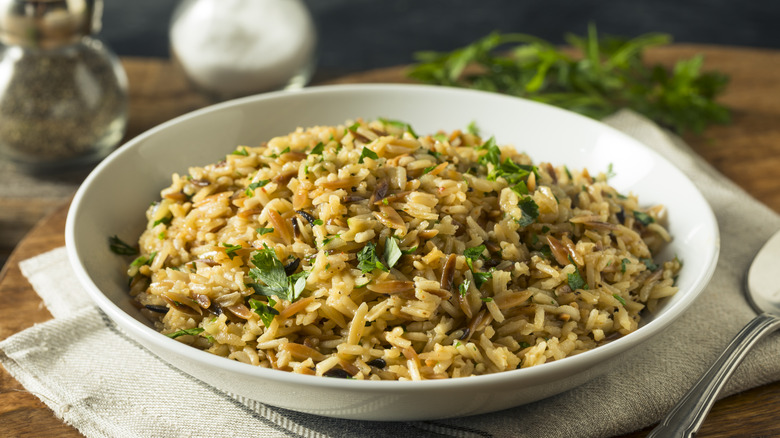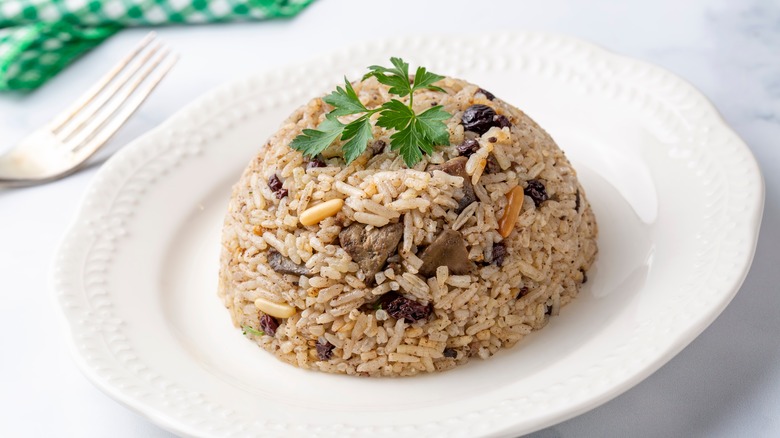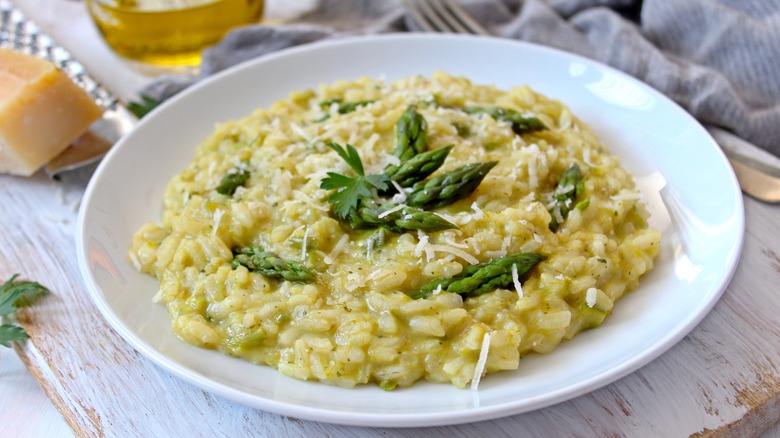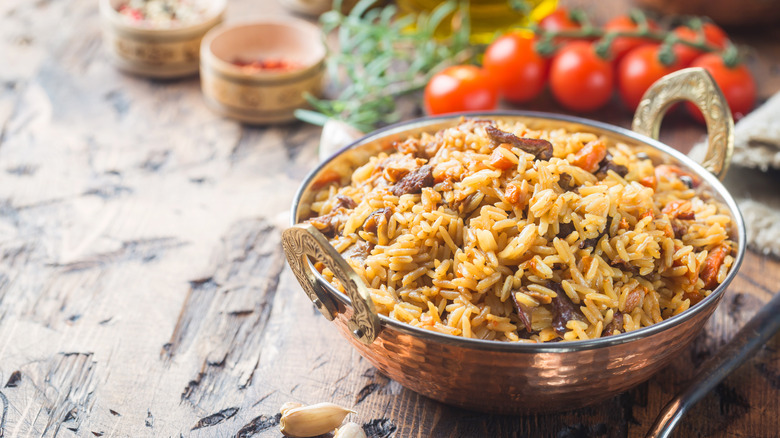The Major Difference Between Pilaf And Risotto
If you don't typically step outside of making steamed rice at home, then you might not be familiar with more involved rice-based dishes. But for those who are not sure what exactly it is that separates the two types of rice recipes, then you might not be sure which one you'd like to try. Ultimately, it comes down to texture, but both dishes also reflect their countries of origin too.
According to Chef Gourmet, pilaf originates from India or Iran between 750 and 1258 and was spread across cultures all the way to Spain because of the expansion of the Abbasid empire. It was also, however, the Arabs that introduced rice to Italy around the 14th century (via Cuisine at Home). Rice was an easy crop to grow in Sicily and Naples, and its popularity spanned all the way to Milan, Venice, and Genoa, where risotto was created.
From rich and creamy risotto to fluffy pilaf with spices layered in, you might be surprised just how different the two similar types of rice dishes actually are.
What is rice pilaf?
While rice pilaf likely brings to mind a specific dish, pilaf is actually the cooking method used to prepare the dish (via Chef Gourmet). To pilaf rice, the dish starts by sautéing onions in fat — butter or oil will do. Next, uncooked rice is added to quickly toast the grains of rice, according to Wekiva Culinary. Once the rice has been slightly cooked without liquid, broth or water is added and the rice is simmered until the liquid has completely evaporated.
Though it might seem like a straightforward cooking technique, making rice pilaf with just the right consistency and texture is very important. To achieve the best results, Wekiva Culinary suggests using lower heat to avoid burning the grains of rice. This will help cook the rice and ensure it won't clump together when you serve it up. Another tip is to use slightly less liquid than you might expect when simmering the rice.
What is risotto?
Unlike rice pilaf which requires a light hand with the liquid, risotto calls for a lot of liquid — and time. According to Taste of Home, risotto is cooked over a long period of time with additional liquid added throughout the process. In doing this, most can be made of rice's starchiness. As the grains cook, the starch is released and cooks into the liquid. Ultimately, that means you'll have deliciously tender rice with a smooth, creamy sauce that exudes flavor. Think of it like adding pasta water to the sauce of your favorite pasta dish.
But just like a pilaf, there is a tip that can help you ensure the best texture for your risotto. Taste of Home suggests heating the broth before adding it to the rice throughout the cooking process. This will prevent the starch from closing up and refusing to soak up the liquid which is necessary to make the delicious sauce.
This is how the two rice dishes are different
Rice pilaf and risotto might both be rice dishes simmered in liquid, but the two recipes yield vastly different results. In risotto, the ample liquid that is added throughout the cooking process gives it the creamy, saucy finish you would expect. Pilaf, on the other hand, calls for very little liquid and turns out to be rather dry since all of the liquid evaporates. But apart from the similar cooking techniques, there is only one additional similarity between pilaf and risotto. Both require gently toasting the rice prior to cooking the rest of the dish, according to Wekiva Culinary.
So, when you are considering which rice dish to make at home, it is most important to consider how much time you have to prepare the dish. Next, think about which texture you would like to serve. But, if you have planned well enough in advance, you will be ready to make either delicious simmered rice dish.



